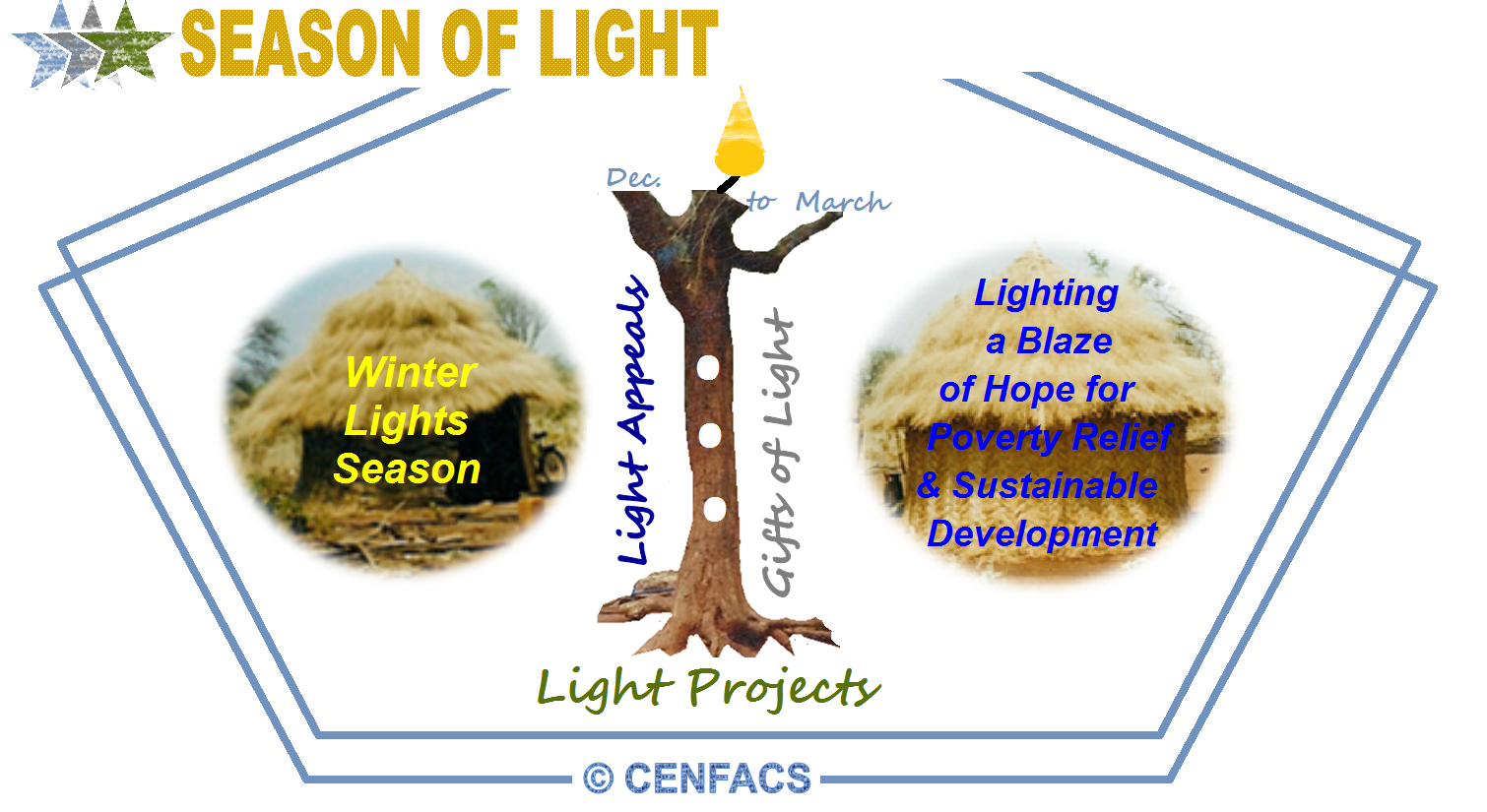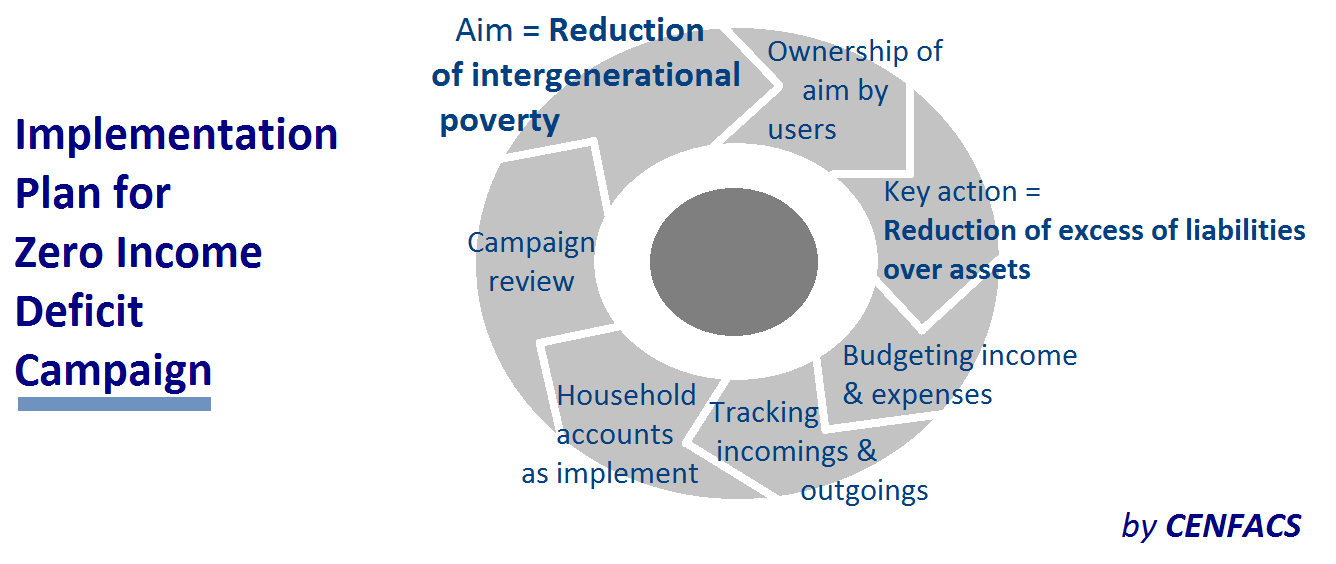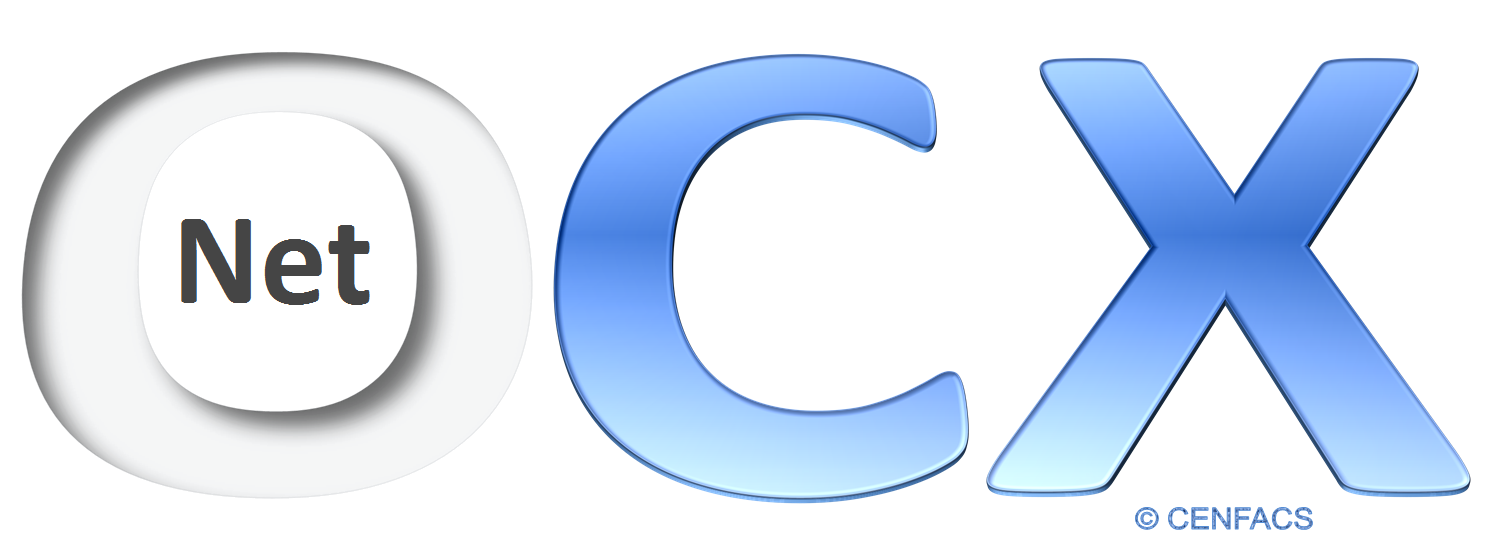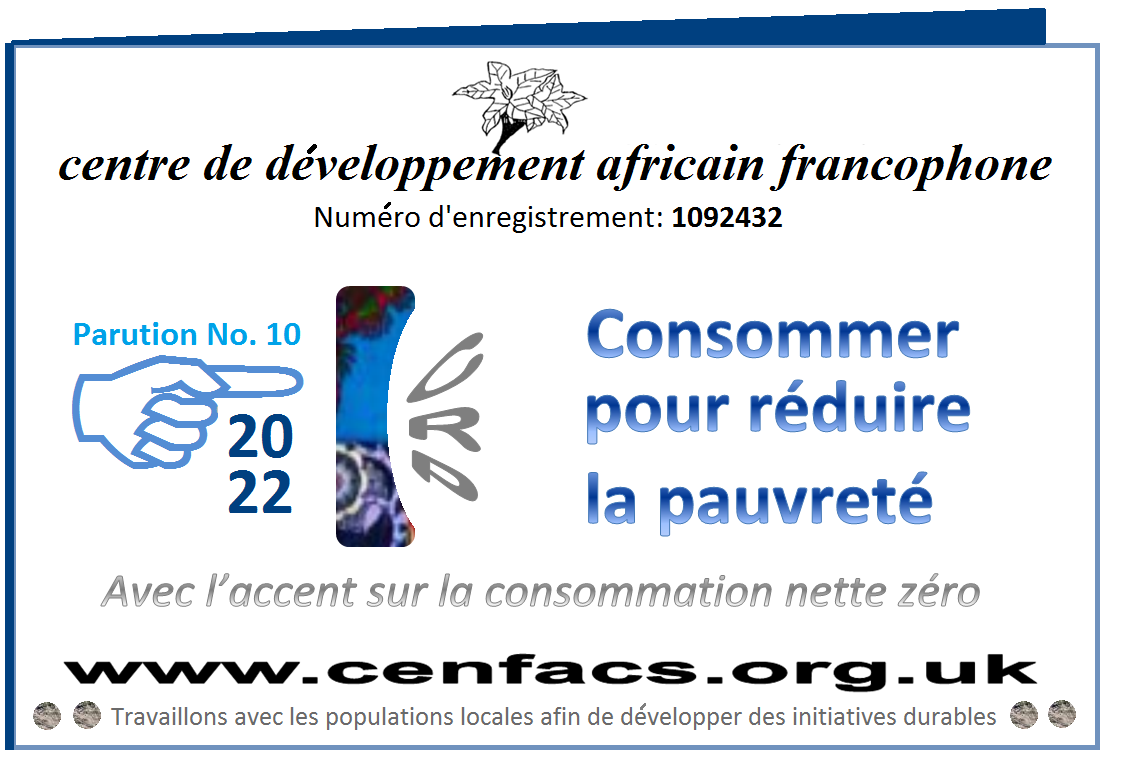Welcome to CENFACS’ Online Diary!
12 January 2022
Post No. 230
The Week’s Contents
• Light Season’s Resources, Projects and Programmes
• Zero Income Deficit Campaign 2022 with a focus on Net Income (or Deficit)
• Appeal to End Food Insecurity in the Eastern Horn of Africa
… And much more!
Key Messages
• Light Season’s Resources, Projects and Programmes
Last week, we listed projects and programmes to be carried out in January 2022. This week, we are unveiling more projects and programmes including resources. The last week’s listed projects and the ones to be unveiled below will all make our Light Season 2022.
However, amongst last week’s and this week’s projects and programmes, there are those (such as humanitarian appeals/projects) that are specifically designed to feature the Light Campaign/Advocacy, to bring and carry the message of hope through a Blaze of Hope; whereas there are others that just fall within the Season of Lights, which is between December in the preceding year (e.g. 2021) and March in the following year (e.g. 2022).
Under the Main Development section of this post, we have provided further details about the Light Season’s Resources, Projects and Programmes.
• Zero Income Deficit Campaign 2022 with a focus on Net Income (or Deficit)
This year and Season of Light, we are keeping on working with the community members so that they can better manage their income, particularly they can reduce the deficit (or excess of expenses over income or excess of liabilities over assets or even excess of outgoings over incomings) linked to their income. In our work with them, the focus will be on net income or net deficit. But, what is net income (or deficit).
• • Basic understanding of net income (or deficit)
To make it easy but technical, we have selected these two definitions from the lawsinsider.com (1) which states that…
“Net Income (or Deficit) means with respect to any person (or any asset of any person) for any fiscal period, the net income (or deficit) of such person (or attributable to such asset), after deduction of all expenses, taxes and other proper charges, determined in accordance with Generally Accepted Accounting Principles”
Or
“Net Income (or Deficit) means, with respect to any fiscal period, the consolidated net income (or deficit) of the subject Borrower, after deduction of all expenses, taxes, and other proper charges, determined in accordance with Generally Accepted Accounting Principles”.
How these definitions can help the CENFACS Community.
• • Working with the Community on Net Income (or Deficit)
We will be working with our members on ways of improving their incomings and assets on the one hand; and of reducing or controlling outgoings and liabilities on the other hand. In doing so, one can hope that they will be able to create a surplus or simply to better manage the net income (or deficit).
For those members of our community who are struggling to get the level of net income (or deficit) of their household accounts manageable or affordable, they are free to work with us so that together we can explore steps forward or ways out to the problem.
To ask or get support to sort out the net income (or deficit) from your household accounts, please contact CENFACS. Also, to support Zero Income Deficit Campaign 2022, please contact CENFACS.
• Appeal to End Food Insecurity in the Eastern Horn of Africa
After completing the review of Horn-of-Africa Appeals which started at the beginning of December 2021, we are now appealing for an end to food insecurity in the Eastern Horn of Africa. Indeed, due to the worsening drought in the region, many of those are living there will be at risk of severe hunger. The Famine Early Warning Systems Network (2) in its food security platform alerted the world about this hunger situation by arguing on 29 December 2021 the following:
“Over 20 million people were in need of urgent food aid in the Horn of Africa amid severe drought and conflict”
In other words, nearly 20 million people, who would be forced into food insecurity due to drought caused by La Nina natural disaster, would need urgent humanitarian food assistance in 2022.
Additional data from the Food and Agriculture Organisation of the United Nations (3) tells the same hunger story in the Eastern Horn of Africa, particularly in these three countries: Ethiopia, Kenya and Somalia. Data from the Food and Agriculture Organisation of the United Nations (ibid.) indicate the following:
“In Ethiopia, about 7.4 million people [were] severely food insecure between July and September 2021”
“In Kenya, about 2.4 million people [were] estimated to be severely food insecure between November 2021 and January 2022, reflecting poor rainy seasons”
“In Somalia, about 3.5 million people [were] estimated to be severely food insecure between October and December 2021” as a result of consecutive poor rainy seasons”
The above figures are not given for statistical purpose. They are referred to in order for action to be taken. They help to launch this first wave of appeal under the Light Projects, as way of sending a message of hope to those hungry people in the Eastern Horn of Africa.
One can hope that every effort will be made, by those who can help, so that logistics and channels for food assistance will be put in place in order to enable those in need to have access to food and other life-saving commodities. One can as well expect that effort will be made to support locally grown food to meet the local food needs.
The above is our Blaze of Hope or Light Appeal to support the peoples of Eastern Horn of Africa.
To support or enquire about this Light Appeal, please contact CENFACS.
Extra Messages
• Digital and Social Media Campaign
Level 5: Apps that Help to Reduce Poverty
The next level of our Digital and Social Media Campaign will be about what online and internet applications (or Apps.) can do for those users who use a mobile phone or any other electronic devices (e.g. tablet or netbook) in terms of poverty reduction and of the enhancement of sustainable development.
• • What Level 5 of this Digital and Social Media Campaign can achieve
Through this level 5, we hope to achieve the following:
√ Identify more of those Apps with built-in poverty-relief facilities, tasks or functionalities even if their designers did not in the first place think of poverty reduction during their conception
√ Find out what they can or cannot do for people living in poverty
√ Match those Apps with the problems that people in need face
√ Check if Apps are free or paid
√ Disseminate information about these Apps within the community so that more people are aware about them in terms of reducing poverty and enhancing sustainable development.
• • Apps useful in reducing poverty
There are Apps that users can download to their electronic devices so that they can better perform a particular task. However, not all those applications could enable to reduce or end a particular type of poverty. In our Campaign, we would like to highlight those Apps that are useful in reducing poverty and hardships.
For example, WhatsApp Messenger, which is a free messaging and video calling app, is a cross-platform mobile messaging app that enable people to send text messages and voice messages, make voice and video calls, and share images, documents, user locations and other contents. WhatsApp can help to reduce both communication poverty and money poverty by enabling its income deprived users from different parts of the world to use its platform to run phone conversation as well as materials (e.g. videos and images) for free.
One could hope that if anyone has more and better information about these Apps that help to reduce poverty and hardships, it could be a good idea to share this information with us and the rest of the community.
To share Apps information and/or support the level 5 of our Digital and Social Media Campaign, please contact CENFACS.
• Poverty Reduction Show
Showing that poverty reduction is happening despite COVID-19 new variants is an extra message we would like to share with our users, Africa-based Sister Organisations and other stakeholders.
This 2022, we would like our local people and Africa-based Sister Organisations to show or showcase via a variety of evidences, testimonies, cases, films, videos, news and examples of poverty reduction that poverty reduction has happened and continues to happen despite the continuing challenge posed by COVID-19 and its currently running variants (like Delta and Omicron). Poverty reduction show will add value to stories of poverty reduction we normally run.
Through this showing exercise, we hope to build a better picture of these poverty reduction cases with features, similarities, differences and patterns for learning and development experience about our system of poverty reduction. It is about proofing that poverty reduction does happen in real life.
To show or share your experience on how poverty reduction has happened to you or those you know despite the mounting pressure of COVID-19 and its variants, please contact and share it with CENFACS.
• Net Zero Consumers’ Experience about Substitution Effect
How many of net zero consumers are attracted by net zero consumer goods?
As part of the month of Responsible Consumption and of Net Zero Consumption, we are looking for net zero consumers’ experiences of substituting non-net zero consumer goods (or carbon footprint consumer goods) to the purchase of net zero consumer goods in their shopping basket.
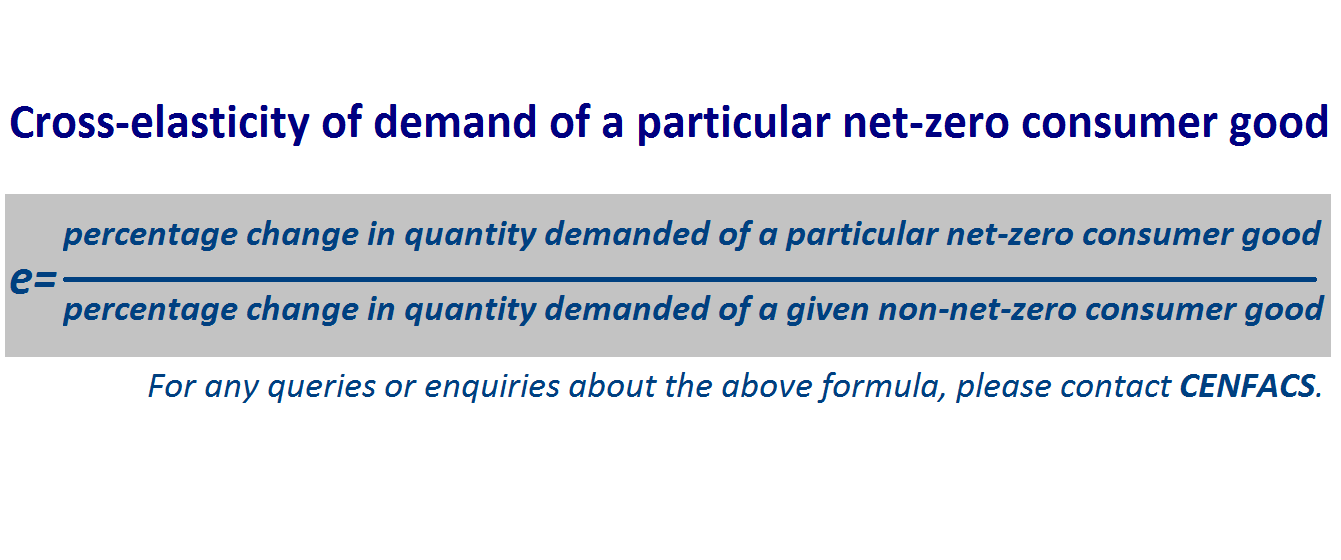 We are precisely working on the elasticity of technical substitution between non-net zero consumer goods and net zero consumer goods. In other words, our work is on the substitution of one non-net zero consumer product (or carbon footprint consumer product) for a net zero consumer one resulting from a change in their relative prices. We are trying to find out the substitution effect of these two types of goods whether or not they are economically interchangeable by poor consumers in order to reduce poverty.
We are precisely working on the elasticity of technical substitution between non-net zero consumer goods and net zero consumer goods. In other words, our work is on the substitution of one non-net zero consumer product (or carbon footprint consumer product) for a net zero consumer one resulting from a change in their relative prices. We are trying to find out the substitution effect of these two types of goods whether or not they are economically interchangeable by poor consumers in order to reduce poverty.
The result of this work will help us to determine how many of poor consumers are attracted by net zero consumer goods or a particular one. In doing so, we can improve our perception about net zero consumer goods/economy and the support we give through the Consume-to-Reduce-Poverty project/resource.
To take part in this study or to tell us your experience of the use of net zero consumer goods in relation to non-net zero consumer goods, please contact CENFACS. Also, anyone who has reliable data on this matter; it will be good to let CENFACS know.
Le 10e numéro du CRP (Consommer pour Réduire la Pauvreté) met l’accent sur la consommation nette zéro.
Dans ce numéro, nous travaillerons sur la consommation nette zéro; c’est-à-dire une consommation qui n’ajoute pas d’émissions de CO₂ supplémentaires à la quantité de gaz à effet de serre dans l’atmosphère.
La consommation nette zéro est un effort que tous les membres de notre communauté peuvent faire afin d’aider à atteindre l’objectif mondial de 1,5 degré Celsius tel qu’il ressort du Traité de Paris sur le climat.
Pour évoluer vers une trajectoire de consommation nette zéro, il faudra avoir une stratégie de consommation nette zéro et des plans d’action personnalisés. Il faut également entreprendre des évaluations des gaz à effet de serre et une comptabilité carbone afin de déterminer l’impact de notre consommation en termes d’émissions de CO₂.
En gros, le 10e numéro du CRP est un outil de travail pour qu’ensemble avec la communauté CENFACS nous marchons vers l’objectif 1,5 degré Celsius.
Pour soutenir la consommation nette zéro et responsable aussi bien qu’obtenir le numéro complet de 2022 de cette ressource hivernale (Consommer pour Réduire la Pauvreté et les Changements Climatiques), veuillez contacter le CENFACS.
Main Development
• Light Season’s Resources, Projects and Programmes
The following highlights the Light Season’s Resources, Projects and Programmes.
• • What are Light Season’s Resources, Projects and Programmes?
They are a stock of assets (resources) together with a set of interdependent tasks (projects) and related activities (programme) designed to help meet the aim of poverty reduction either within the Lights Season and/or beyond it depending on the types of resource, project and programme. In other words, whether it is about resources or projects or even programme, the unified aim is to help reduce poverty and enhance sustainable development.
• • Types of Light Season’s Initiatives
There are two types, which are:
(a) Initiatives that are specifically designed to bring message of hope or a Blaze of Hope
(b) Initiatives that fall within the Season of Light
• • • Initiatives to bring message of hope or a Blaze of Hope
They include two waves of intervention or Blazes of Hope, which are:
(a) Appeals to deal with the unfinished business of previous destruction and disruption brought by the coronavirus, wars and natural disasters
(b) Appeals linked to seasonally erupted events or effects from health disasters (like the coronavirus), armed conflicts, economic slowdown, climate change and natural disasters
For example, the Appeal to End Food Insecurity in the Eastern Horn of Africa is at the same time for unfinished business of humanitarian and any eruption of food crisis in the New Year.
• • • Initiatives falling within the Season of Light
They consist of the following:
∝ Light (or energy) and poverty reduction projects (New)
∝ Programme of gradually phasing down coal as source of energy for Africa’s poor coal-dependent (New)
∝ Activities to adapt and mitigate transformational and structural changes to cope with changing uncertainty in the Anthropocence
∝ Advocacy and e-workshops about energy transition to carbon net zero or post-carbon economy, from polluting to clean and green energy and technology (New)
∝ Climate neutral projects (New)
The above initiatives are not the only ones for the Season of Light. During the season, we may cancel or reduce the scope of some initiatives if we realise that the problem they were supposed to resolve are no longer there. Likewise, we may add new or recurring initiatives depending on the events within the community we serve. The worksheet below provides some indication in terms of initiatives implementation plan.
• • Basic implementation plan for the Light Season’s Initiatives
As we go along the Light Season, the following implementation plan consisting of ten initiatives will be effective.
10 initiatives to implement the Light Season 2022
This initial implementation plan for the Light Season’s initiatives can change depending on the circumstances and conditions. Some of the initiatives inserted in the plan/worksheet are not listed under Types of Light Season’s Initiatives. This is not a big issue. What is important is the deliverables of those scheduled within the plan.
For those who would like to discuss any of these planned initiatives or any aspects of the plan; they can contact CENFACS.
To support and or enquire the Light Season’s Resources, Projects and Programmes for 2022, please contact CENFACS.
_________
References
(1) https://www.lawsinsider.com/dictionary/net-income-or-deficit
(2) https://fews.net
(3) https://www.fao.org/giews/country-analysis/external-assistance/en
_________
Help CENFACS keep the Poverty Relief work going this year.
We do our work on a very small budget and on a voluntary basis. Making a donation will show us you value our work and support CENFACS’ work, which is currently offered as a free service.
One could consider a recurring donation to CENFACS in the future or as a New Year resolution.
Donate to support CENFACS!
FOR ONLY £1, YOU CAN SUPPORT CENFACS AND CENFACS’ PROJECTS, JUST GO TO :Support Causes – (cenfacs.org.uk)
Thank you for visiting CENFACS website and reading this post.
Thank you as well to those who made or make comments about our weekly posts.
We look forward to receiving your regular visits and continuing support throughout 2022 and beyond.
With many thanks.
